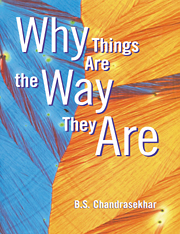Book contents
- Frontmatter
- Contents
- PREFACE
- I INTRODUCTION
- II CRYSTALS
- III PARTICLES AND WAVES
- IV THE ATOM
- V STATISTICAL PHYSICS
- VI THE QUANTUM MECHANICAL CRYSTAL
- VII COPPER WIRES AND GLASS RODS
- VIII SILVER SPOONS AND PLASTIC SPOONS
- IX GLASS PANES AND ALUMINIUM FOILS
- X ELECTRIC BULBS AND INSULATED CABLES
- XI MAGNETS
- XII SUPERCONDUCTORS
- XIII CONCLUSION
- GLOSSARY
- INDEX
VI - THE QUANTUM MECHANICAL CRYSTAL
Published online by Cambridge University Press: 20 October 2009
- Frontmatter
- Contents
- PREFACE
- I INTRODUCTION
- II CRYSTALS
- III PARTICLES AND WAVES
- IV THE ATOM
- V STATISTICAL PHYSICS
- VI THE QUANTUM MECHANICAL CRYSTAL
- VII COPPER WIRES AND GLASS RODS
- VIII SILVER SPOONS AND PLASTIC SPOONS
- IX GLASS PANES AND ALUMINIUM FOILS
- X ELECTRIC BULBS AND INSULATED CABLES
- XI MAGNETS
- XII SUPERCONDUCTORS
- XIII CONCLUSION
- GLOSSARY
- INDEX
Summary
From isolated atom to crystal
A crystal is an orderly arrangement of atoms that are sitting rather close to each other, as we saw in chapter II. We then looked at the basic ideas of quantum mechanics in chapter III. We used these ideas to get a picture of an isolated atom in terms of its nucleus and especially its electrons in chapter IV. The material things that we deal with in our daily life consist not of single atoms or electrons, but rather of very large numbers (like 1021) of particles. We need a statistical approach to cope with such numbers. We saw in chapter V that quantum mechanics, when used to give such a description of assemblies of particles, divides them into two types: fermions and bosons.
The only property that the crystals of chapter II had was their symmetry. A real crystal has in addition many other properties like being a good (or bad) conductor of electric currents, having a colour, and so on. These properties depend on the particular kind of atoms that make up the crystal. For example, silver and silicon are both crystalline, but differ widely in many of their properties. The only essential difference, other than in the mass, between the atoms of any two elements is in the number of electrons surrounding the nucleus. So we can conclude that this difference must play a key role in determining the specific properties of materials.
Information
- Type
- Chapter
- Information
- Why Things Are the Way They Are , pp. 103 - 132Publisher: Cambridge University PressPrint publication year: 1997
